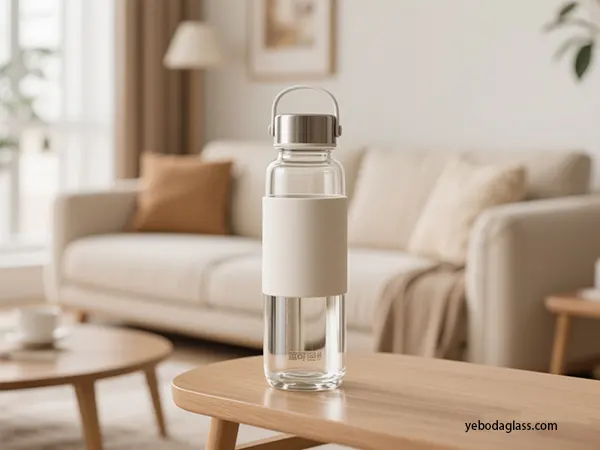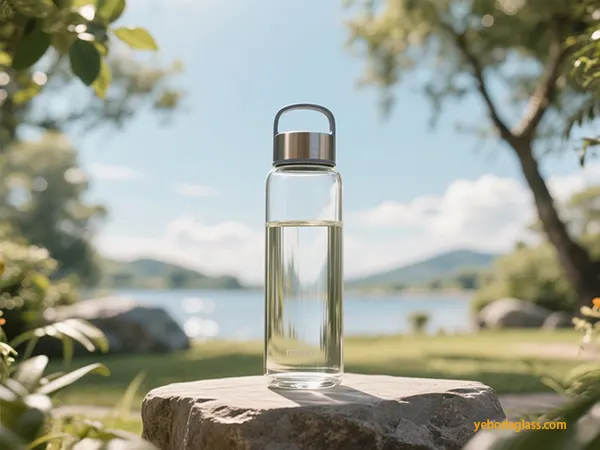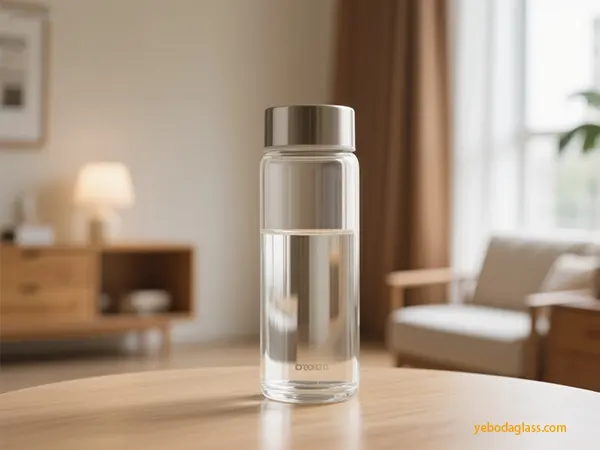介绍
In today’s global market, where consumer expectations for both quality and stability are more than ever, the role of glass water bottles in product strategy has moved from a simple packaging solution to a main element of brand identity, supply chain flexibility and market discrimination. Industries businesses-from beverage manufacturers, wellness brands and hospitality groups to private-labeled retailers-It is believed that choosing the right glass packaging partner is long-term implications for both profitability and prestige. This report provides a wide roadmap for businesses engaged in source of glass water bottles. This order covers the full life cycle of purchase, from volume planning and specification design to cost analysis, quality assurance, supplier waiting, logistics and emerging sustainability trends. By equipping the decision -makers with actionable insights, it ensures that they can interact effectively with suppliers, secure frequent quality, and optimize operational efficiency.

Wholesale Order Volume and Scalability Analysis
Understanding The Purchase Scale
The first and most important idea in sourcing of glass water bottle is determining the purchase scale. Businesses vary greatly in their quantity requirements, which can usually be classified into three levels:
- Small-scale bulk (1,000 to 10,000 units): boutique beverage startups, artisans brands and testing-bazar products suited for launch.
- Mid-scal bulk (10,000 to 50,000 units): Common for established regional brands, hotels, or restaurant chains expand their personal-labeled offerings.
- Large-scale bulk (50,000+ units): aligned with multinational brands, national retailers or public distribution producers.
Suppliers should not only demonstrate the current production capacity, but also have scalability to handle the ups and downs in demand. Businesses must verify whether suppliers maintain buffer capacity to manage extreme weather and unexpected growth.
Glass Material Selection
Two primary glass types dominate this market:
- capacities typically range from 300ml to 1000ml (approximately 10 to 32 ounces), with common sizes including 550ml (18oz) and 750ml (25oz) options. Yeboda offers this full range of sizes from 300ml up to 1000ml. The most cost effective, widely available, and sufficient for most bottled water applications.
- 硼硅玻璃: recommended for better thermal shock resistance and chemical stability, premium brands or reusable bottle programs.
Additionally, color options – Clear, Amber, Green, or Cobalt – UV security, effect of alignment with perceived value and brand aesthetics. For example, amber bottles block more than 90% UV light, which protects delicate mineral content.
Branding and Adaptation
Beyond structural features, design specifications include rapid custom logo embossing, frosted finish, screen printing and labeling surfaces. Such adaptation adds upfront costs, often requiring new molds, but they remember the brand price and consumer. At the conclusion of this design-centered section, the glass water bottles of 是的,是的。 are notable for their high-darse, adaptable molding capabilities, and a reputation to balance elegance with durability-makes them a strong partner for businesses seeking a premium brand presentation.
LID and Closure System Requirements
Importance of Closures
Closed system of glass water bottles are important not only for preserving product integrity, but also for defining user experience. Buyers should evaluate compatibility between bottle neck finish and closure design to ensure airtight performance.
Main Closure Options
- Metal Screw-Tops (Stainless Steel, Aluminum): Reliable sealing, long shelf-life.
- Swing-Top Closure: Reusable, mechanical gasket system for artisanal beverages.
- Plastic Cap (BPA-Free): Lightweight, cost-effective.
- Bamboo/Eco-Friendly Lids: Align with sustainable branding.
Impact on Cost, Branding, and Stability
Each closure affects cost, branding, and product stability. Bamboo lids resonate with eco-conscious consumers but require precise machining for durability.

Influence on Logistics
Closure type also impacts logistics: fragile swing-tops may require extra protective packaging, increasing freight costs, while standard screw-caps optimize shipping density.
Cost Analysis and Target Price Point Optimization
Cost adaptation is a decisive factor in wholesale bottle purchase. The unit of glass water bottles depends on a matrix of value factors:
- Creation of raw materials: Soda-Lime Glass is cheaper than borosilicate, although the latter provides better durability for reusable programs.
- Adaptation level: Embossed logo, tinted finish, and special molds can increase $ 5,000- $ 10,000.
- Order quantity: high amounts of dramatically low cost per unit. For example, 5,000 bottles can cost $ 0.80, while 50,000 units can reduce it by $ 0.45.
- Energy Cost: Glass construction is energy-intensive; The fuel price has a significant impact in the ups and downs.
- Shipping and tariffs: Ocean goods, customs, and broken allowances should be included in the total landed costs.
The key is balanced with quality with strength. Businesses should request wide quotes that break unit costs, packaging, mold fees and shipping. Multi-year contracts can sometimes lock in favorable pricing. For companies pursuing stability, the cost premium for recycled materials or environmentally friendly lids should be weighed against marketing and compliance benefits.
Stability and Quality Assurance Protocols
For wholesale buyers, quality assurance is non-circumcision. Glass water bottles will face a series of physical and chemical stresses without compromising safety or purposes. Major durability measures include:
- Thermal shock resistance: Important to bottles subject to rapid temperature changes during sterilization or filling.
- Impact resistance: Important for long-hall shipping and retail handling.
- Stackability: There is no interaction with water minerals or added tastes.
Wall thickness stability: prevents weak spots that can cause rupture.
Suppliers should be provided with certificates like ISO 9001: 2015, FDA approval and ASTM compliance. Buyers are encouraged to request samples and even a commission is given to independent third-party laboratory tests before committing to large orders. Some manufacturers appoint anneal and temping to remove internal stresses and strengthen bottles. Others integrate recycled collets in production, which not only improves stability, but also increases stability.
Supplier Vesting & Desigence Framework
Choosing the right supplier involves more than comparing quotes. Businesses should adopt a structured appropriate hard work structure:
- Production capacity verification: site audit or video tour to confirm real capabilities.
- Quality Control System: Protocol documented for defect check, batch sampling and corrective measures.
- Certificates and compliance: ISO, ROHS, access and food safety documents.
- Financial stability: Using a credit report or Altman Z-score to evaluate the risk of supplier insolvency.
- Moral and environmental practices: Ensuring labor rights, emission control and recycling policies are in place.
- Communication proficiency: test reaction time and clarity, which directly affects the order reliability.
To reduce the risk, businesses often use dual sourcing strategies, partnering with two suppliers in various fields to protect against political, logical or natural disruption.

Logistics, Packaging and Supply Strategies
Logistic management of glass water bottles causes unique challenges due to delicateness and weight. Effective strategies include:
- Protective packaging: double-boxing, corrugated divider, and air cushioning low breakdown.
- Palletization standards: To reduce transfer in transit, bottles should be tightly wrapped on the palette to shrink.
- Freight mode selection: Full-concenter-load (FCL) is better for large orders, while at least-from-tax (LCL) can work for small batches.
- Customs withdrawal: Renting licensed brokers helps to avoid expensive delays.
- Total Landed Cost Analysis: Businesses should calculate not only per-unit value but freight, duties, warehousing and insurance.
With increasing demands of e-commerce fulfillment, safe packaging is more important than ever. For example, the swing-top closure requires more protective materials than the standard screw-top, which directly affects shipping efficiency.
Conclusions
Source of glass water bottles are no longer a simple purchase practice; This brand is a strategic column for integrity, operational efficiency and stability leadership. From volume planning and design ideas to global supplier veating and logistics, businesses must navigate a complex but rewarding landscape.
Successful companies will be those that balance the cost with durability, adapting with stability and practicality with scalability. By integrating the smart procurement framework, they not only secure reliable supply chains, but also strengthen the brand trust in the rapid environment-conscious markets. Yeboda’s glass water bottles simulate these principles, which offer stability, beauty appeal and environmentally friendly innovation-they make a perfect partner for businesses seeking to flourish in competitive global market.




